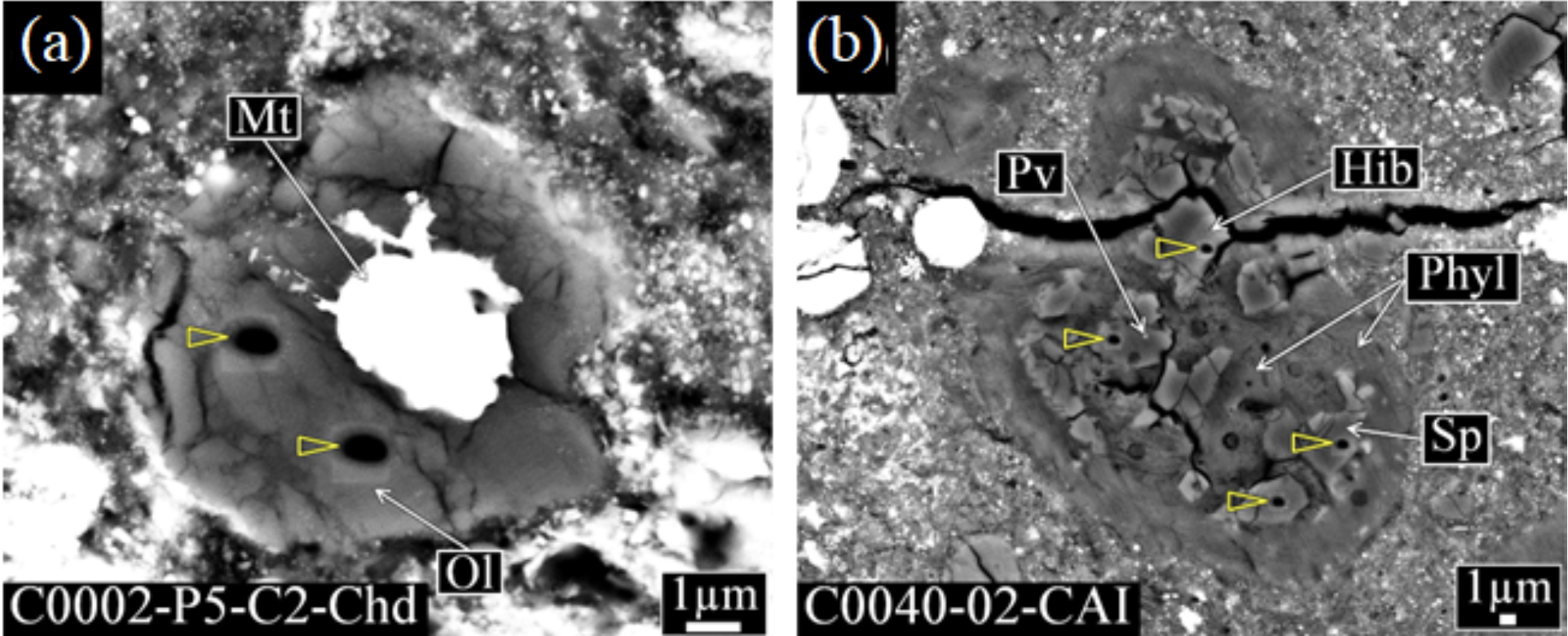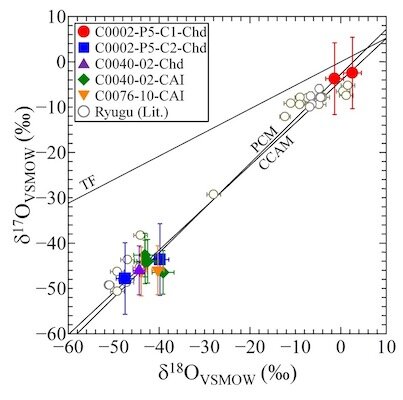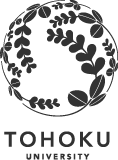NEWS
New Insights from an Ancient Asteroid
In June 2018, Japan's Hayabusa2 spacecraft retrieved samples from asteroid Ryugu and successfully returned them to Earth. Researchers at Tohoku University have analysed the samples and identified what they believe may be the oldest solids from the solar system that have thus far become available for study. They reported their findings in the journal Nature Communications on February 16, 2023. The article was also selected to feature in the Editors' Highlights.
The work was focused on spherical mineral grains, called chondrule-like objects and calcium-aluminium-rich inclusions (CAIs). These grains are key components of chondritic meteorites, which are delivered to Earth from the asteroid belt without being modified by processes, such as melting, that can affect other meteorites. The samples from Ryugu gave scientists the opportunity to study material freshly gathered from an asteroid that, at the time of sampling, was around 15,000,000 kilometres from Earth. But surprising evidence from the investigations of the samples by many research teams has suggested that Ryugu was initially formed much further from Earth, in the outer reaches of the solar system.
A key finding from the analysis by the Tohoku University group is that the grains in the Ryugu samples were likely transported in widening circles from the inner regions of the early solar system out to the much more distant region where the original asteroid Ryugu formed.

Electron microscope images of a chondrule-like object and CAI in the Ryugu samples. ©Tohoku University
The team's conclusions are partly based on analysing the ratio of different oxygen isotopes in the samples. These are forms of oxygen atoms with varying masses due to differing numbers of neutrons in their nuclei. The lower mass oxygen-16 isotope has one less neutron than oxygen-17 and two fewer than oxygen-18. Many of the Ryugu grains were enriched in oxygen-16. The isotope content, together with analysis of the grains' sizes and mineral composition, led the researchers to suggest their ancient origin and likely transport outwards to the far regions of the solar system, where they became part of a body that then fragmented to form asteroid Ryugu.
"We now want to analyse more of these oldest solar system solids in Ryugu, to try to understand the mechanisms behind the radial transport outwards in the early solar nebula," says geochemist Daisuke Nakashima of the early Solar System Research Group at Tohoku University. Nakashima and colleagues collaborated on the investigation with researchers elsewhere in Japan and the USA.
"This is fundamental research into the ancient events that built our solar system," says Nakashima. The work is part of the fascinating process of understanding how the planetary system that eventually gave rise to life on Earth was itself born.

Oxygen isotope diagram for the chondrule-like objects and CAIs in the Ryugu samples.©Nakashima D. et al.
Publication Details:
Title: Chondrule-like objects and Ca-Al-rich inclusions in Ryugu may potentially be the oldest Solar System materials
Authors: Nakashima D. et al.
Journal: Nature Communications
DOI: 10.1038/s41467-023-36268-8
Contact:
Daisuke Nakashima
Title or position: Lecturer
Affiliation: Department of Earth Science, Graduate School of Science, Tohoku University
Email: dnaka * tohoku.ac.jp (Replace * with @)
Website : http://www.es.tohoku.ac.jp/JP/index.html




